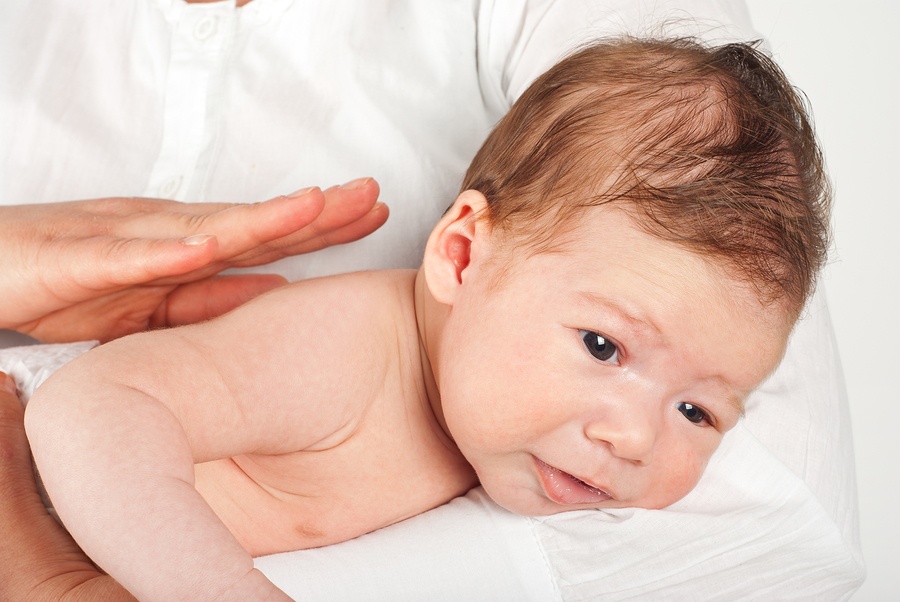When babies gulp down either breast milk or formula, they also swallow air that collects in the esophagus, especially if the child is young enough to lie down most of the time. This causes gas, and also leads to the child spitting up its food.
Burping your child helps the baby to get rid of gas and hopefully to save off the regurgitation. For bottle fed babies, burp after the child has consumed 2-3 ounces / 59-89 mil). For breast fed children, burp the child when it’s time to switch breasts and at the end of the feeding.
If it’s clear, however, that your baby isn’t spitting up much and really does not like it when you force him to stop for burping, it’s okay to wait until the he signals he’s had enough to eat.
To get those air bubbles up try one of these three positions:
- Put the baby on your shoulder.
- Sit the child up on your lap using a hand on the chest to support the chin.
- Lay the baby face down across your lap with the head raised slightly on your thigh.
Regardless of the position, the baby’s head should be just a little higher than the stomach.
Rub the baby’s back with your fingertips or palm. If the child is on your shoulder gently “dance” with the infant.
Generally after 4-5 minutes if a child hasn’t burped he doesn’t need to and you can stop trying.
After age 2-3 months, the child no longer needs to be burped regularly since it’s now spending more time in an upright position and awake. Under these circumstances, your baby will burp unassisted.


 I love to write books about family, dating, household, and healthy living. My books are written for everyone in an easy to read and understandable style.
I love to write books about family, dating, household, and healthy living. My books are written for everyone in an easy to read and understandable style.